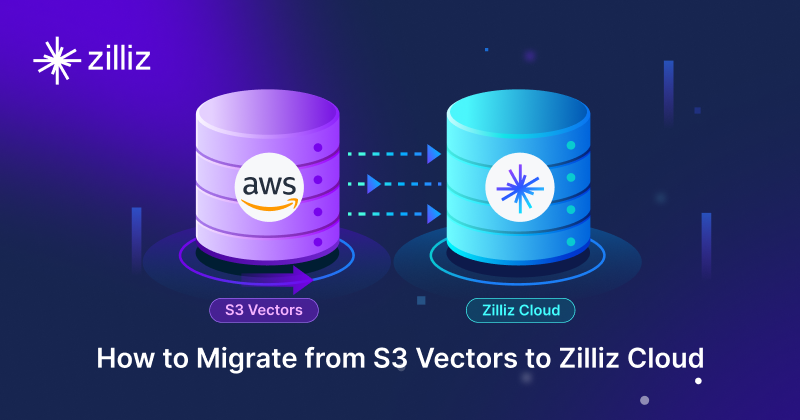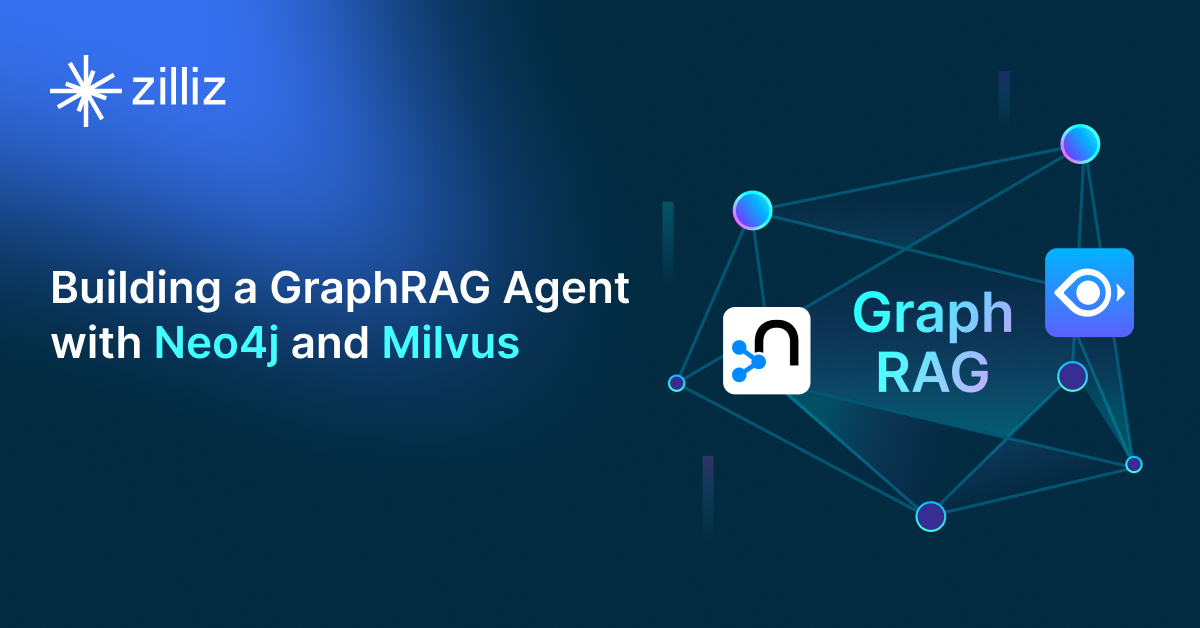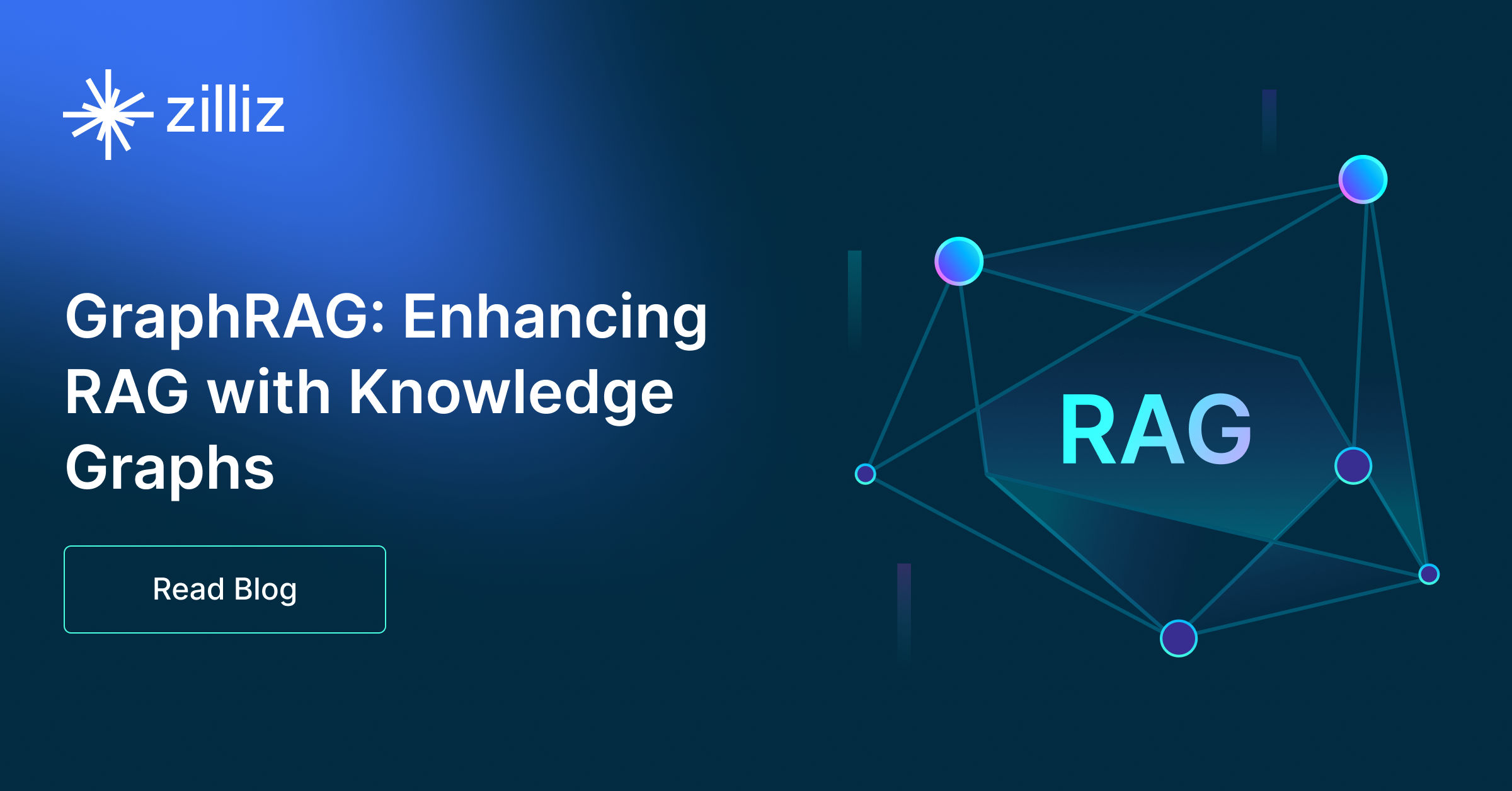Build RAG Chatbot with LangChain, OpenSearch, Mistral AI Ministral 8B, and NVIDIA llama-3.2-nv-embedqa-1b-v2
Introduction to RAG
Retrieval-Augmented Generation (RAG) is a game-changer for GenAI applications, especially in conversational AI. It combines the power of pre-trained large language models (LLMs) like OpenAI’s GPT with external knowledge sources stored in vector databases such as Milvus and Zilliz Cloud, allowing for more accurate, contextually relevant, and up-to-date response generation. A RAG pipeline usually consists of four basic components: a vector database, an embedding model, an LLM, and a framework.
Key Components We'll Use for This RAG Chatbot
This tutorial shows you how to build a simple RAG chatbot in Python using the following components:
- LangChain: An open-source framework that helps you orchestrate the interaction between LLMs, vector stores, embedding models, etc, making it easier to integrate a RAG pipeline.
- OpenSearch: An open-source search and analytics suite derived from Elasticsearch. It offers robust full-text search and real-time analytics, with vector search available as an add-on for similarity-based queries, extending its capabilities to handle high-dimensional data. Since it is just a vector search add-on rather than a purpose-built vector database, it lacks scalability and availability and many other advanced features required by enterprise-level applications. Therefore, if you prefer a much more scalable solution or hate to manage your own infrastructure, we recommend using Zilliz Cloud, which is a fully managed vector database service built on the open-source Milvus and offers a free tier supporting up to 1 million vectors.)
- Mistral AI Ministral 8B: This model is designed for high-performance generative tasks with 8 billion parameters, offering a balance of efficiency and capability. It excels in document generation, conversational AI, and creative content production. Ideal for developers seeking a powerful yet manageable model for sophisticated language applications without the resource demands of larger architectures.
- NVIDIA llama-3.2-nv-embedqa-1b-v2: This AI model is designed for advanced question-answering tasks, leveraging NVIDIA's LLaMA architecture. It excels in embedding-based question retrieval and provides high accuracy in understanding context. Ideal for knowledge-intensive applications, it enhances customer support, educational tools, and research assistance.
By the end of this tutorial, you’ll have a functional chatbot capable of answering questions based on a custom knowledge base.
Note: Since we may use proprietary models in our tutorials, make sure you have the required API key beforehand.
Step 1: Install and Set Up LangChain
%pip install --quiet --upgrade langchain-text-splitters langchain-community langgraph
Step 2: Install and Set Up Mistral AI Ministral 8B
pip install -qU "langchain[mistralai]"
import getpass
import os
if not os.environ.get("MISTRAL_API_KEY"):
os.environ["MISTRAL_API_KEY"] = getpass.getpass("Enter API key for Mistral AI: ")
from langchain.chat_models import init_chat_model
llm = init_chat_model("ministral-8b-latest", model_provider="mistralai")
Step 3: Install and Set Up NVIDIA llama-3.2-nv-embedqa-1b-v2
pip install -qU langchain-nvidia-ai-endpoints
import getpass
import os
if not os.environ.get("NVIDIA_API_KEY"):
os.environ["NVIDIA_API_KEY"] = getpass.getpass("Enter API key for NVIDIA: ")
from langchain_nvidia_ai_endpoints import NVIDIAEmbeddings
embeddings = NVIDIAEmbeddings(model="nvidia/llama-3.2-nv-embedqa-1b-v2")
Step 4: Install and Set Up OpenSearch
pip install --upgrade --quiet opensearch-py langchain-community
from langchain_community.vectorstores import OpenSearchVectorSearch
opensearch_vector_search = OpenSearchVectorSearch(
"http://localhost:9200",
"embeddings",
embedding_function
)
Step 5: Build a RAG Chatbot
Now that you’ve set up all components, let’s start to build a simple chatbot. We’ll use the Milvus introduction doc as a private knowledge base. You can replace it with your own dataset to customize your RAG chatbot.
import bs4
from langchain import hub
from langchain_community.document_loaders import WebBaseLoader
from langchain_core.documents import Document
from langchain_text_splitters import RecursiveCharacterTextSplitter
from langgraph.graph import START, StateGraph
from typing_extensions import List, TypedDict
# Load and chunk contents of the blog
loader = WebBaseLoader(
web_paths=("https://milvus.io/docs/overview.md",),
bs_kwargs=dict(
parse_only=bs4.SoupStrainer(
class_=("doc-style doc-post-content")
)
),
)
docs = loader.load()
text_splitter = RecursiveCharacterTextSplitter(chunk_size=1000, chunk_overlap=200)
all_splits = text_splitter.split_documents(docs)
# Index chunks
_ = vector_store.add_documents(documents=all_splits)
# Define prompt for question-answering
prompt = hub.pull("rlm/rag-prompt")
# Define state for application
class State(TypedDict):
question: str
context: List[Document]
answer: str
# Define application steps
def retrieve(state: State):
retrieved_docs = vector_store.similarity_search(state["question"])
return {"context": retrieved_docs}
def generate(state: State):
docs_content = "\n\n".join(doc.page_content for doc in state["context"])
messages = prompt.invoke({"question": state["question"], "context": docs_content})
response = llm.invoke(messages)
return {"answer": response.content}
# Compile application and test
graph_builder = StateGraph(State).add_sequence([retrieve, generate])
graph_builder.add_edge(START, "retrieve")
graph = graph_builder.compile()
Test the Chatbot
Yeah! You've built your own chatbot. Let's ask the chatbot a question.
response = graph.invoke({"question": "What data types does Milvus support?"})
print(response["answer"])
Example Output
Milvus supports various data types including sparse vectors, binary vectors, JSON, and arrays. Additionally, it handles common numerical and character types, making it versatile for different data modeling needs. This allows users to manage unstructured or multi-modal data efficiently.
Optimization Tips
As you build your RAG system, optimization is key to ensuring peak performance and efficiency. While setting up the components is an essential first step, fine-tuning each one will help you create a solution that works even better and scales seamlessly. In this section, we’ll share some practical tips for optimizing all these components, giving you the edge to build smarter, faster, and more responsive RAG applications.
LangChain optimization tips
To optimize LangChain, focus on minimizing redundant operations in your workflow by structuring your chains and agents efficiently. Use caching to avoid repeated computations, speeding up your system, and experiment with modular design to ensure that components like models or databases can be easily swapped out. This will provide both flexibility and efficiency, allowing you to quickly scale your system without unnecessary delays or complications.
OpenSearch optimization tips
To optimize OpenSearch in a Retrieval-Augmented Generation (RAG) setup, fine-tune indexing by enabling efficient mappings and reducing unnecessary stored fields. Use HNSW for vector search to speed up similarity queries while balancing recall and latency with appropriate ef_search and ef_construction values. Leverage shard and replica settings to distribute load effectively, and enable caching for frequent queries. Optimize text-based retrieval with BM25 tuning and custom analyzers for better relevance. Regularly monitor cluster health, index size, and query performance using OpenSearch Dashboards and adjust configurations accordingly.
Mistral AI Ministral 8B optimization tips
Ministral 8B provides a balance between efficiency and reasoning power, making it a good mid-range choice for RAG applications. Optimize retrieval by leveraging hybrid search (combining vector and keyword search) to improve accuracy. Use prompt engineering techniques, such as structured input formatting and logical ordering of context, to enhance response quality. Adjust temperature (0.1–0.3) and top-k values to balance factual accuracy with creative flexibility. Implement response caching for commonly accessed queries to improve latency. If deploying at scale, use model parallelism to distribute workloads efficiently across multiple GPUs or nodes. Optimize memory management by using half-precision (FP16) or quantized models to improve throughput. Fine-tune retrieval granularity, ensuring that only the most relevant and concise context is included in each query.
NVIDIA llama-3.2-nv-embedqa-1b-v2 optimization tips
To optimize the performance of the NVIDIA llama-3.2-nv-embedqa-1b-v2 in a Retrieval-Augmented Generation setup, consider employing mixed precision training to enhance computational efficiency while maintaining model accuracy. Utilize efficient indexing and retrieval methods, such as FAISS, to quickly access relevant documents, minimizing response time. Tune the hyperparameters, especially the learning rate and batch size, based on validation metrics to improve convergence speed. Implement caching strategies to store frequently accessed data and results for faster retrieval. Regularly profile the model to identify bottlenecks and make necessary adjustments. Finally, leverage NVIDIA’s TensorRT for optimized inference, ensuring that your setup benefits from accelerated performance on compatible hardware.
By implementing these tips across your components, you'll be able to enhance the performance and functionality of your RAG system, ensuring it’s optimized for both speed and accuracy. Keep testing, iterating, and refining your setup to stay ahead in the ever-evolving world of AI development.
RAG Cost Calculator: A Free Tool to Calculate Your Cost in Seconds
Estimating the cost of a Retrieval-Augmented Generation (RAG) pipeline involves analyzing expenses across vector storage, compute resources, and API usage. Key cost drivers include vector database queries, embedding generation, and LLM inference.
RAG Cost Calculator is a free tool that quickly estimates the cost of building a RAG pipeline, including chunking, embedding, vector storage/search, and LLM generation. It also helps you identify cost-saving opportunities and achieve up to 10x cost reduction on vector databases with the serverless option.
 Calculate your RAG cost
Calculate your RAG cost
What Have You Learned?
By diving into this tutorial, you’ve unlocked the power of combining cutting-edge tools to build a Retrieval-Augmented Generation (RAG) system from scratch! You’ve seen how LangChain acts as the glue, seamlessly connecting your workflow by orchestrating interactions between components. With OpenSearch as your vector database, you learned to store and retrieve context efficiently, leveraging its scalability to handle complex queries. The Mistral AI Ministral 8B model stepped in as your LLM powerhouse, generating human-like answers by synthesizing retrieved data, while NVIDIA’s llama-3.2-nv-embedqa-1b-v2 embedding model transformed text into rich, semantic vectors—bridging the gap between raw data and meaningful insights. Together, these tools create a pipeline that supercharges AI applications with accuracy and relevance, turning abstract concepts into a functional system you can tweak, scale, and deploy. Plus, you picked up pro tips for optimizing performance, like fine-tuning retrieval parameters and balancing speed with precision, and even discovered how to estimate costs with the free RAG cost calculator included in the tutorial.
Now imagine the possibilities! You’ve got the blueprint to build systems that answer questions, summarize content, or personalize interactions—all while grounding outputs in real-world data. Whether you’re refining OpenSearch’s indexing strategies, experimenting with Mistral’s creative capabilities, or testing NVIDIA’s embeddings for niche domains, you’re equipped to innovate. This tutorial wasn’t just about code—it was about empowering you to solve real problems. So what’s next? Tweak those parameters, swap models for your use case, or add new data sources. The future of intelligent applications is in your hands. Start building, keep iterating, and let your RAG creations surprise the world. The tools are ready, the foundation is set—your journey as an AI architect begins now! 🚀
Further Resources
🌟 In addition to this RAG tutorial, unleash your full potential with these incredible resources to level up your RAG skills.
- How to Build a Multimodal RAG | Documentation
- How to Enhance the Performance of Your RAG Pipeline
- Graph RAG with Milvus | Documentation
- How to Evaluate RAG Applications - Zilliz Learn
- Generative AI Resource Hub | Zilliz
We'd Love to Hear What You Think!
We’d love to hear your thoughts! 🌟 Leave your questions or comments below or join our vibrant Milvus Discord community to share your experiences, ask questions, or connect with thousands of AI enthusiasts. Your journey matters to us!
If you like this tutorial, show your support by giving our Milvus GitHub repo a star ⭐—it means the world to us and inspires us to keep creating! 💖
- Introduction to RAG
- Key Components We'll Use for This RAG Chatbot
- Step 1: Install and Set Up LangChain
- Step 2: Install and Set Up Mistral AI Ministral 8B
- Step 3: Install and Set Up NVIDIA llama-3.2-nv-embedqa-1b-v2
- Step 4: Install and Set Up OpenSearch
- Step 5: Build a RAG Chatbot
- Optimization Tips
- RAG Cost Calculator: A Free Tool to Calculate Your Cost in Seconds
- What Have You Learned?
- Further Resources
- We'd Love to Hear What You Think!
Content
Vector Database at Scale
Zilliz Cloud is a fully-managed vector database built for scale, perfect for your RAG apps.
Try Zilliz Cloud for Free


